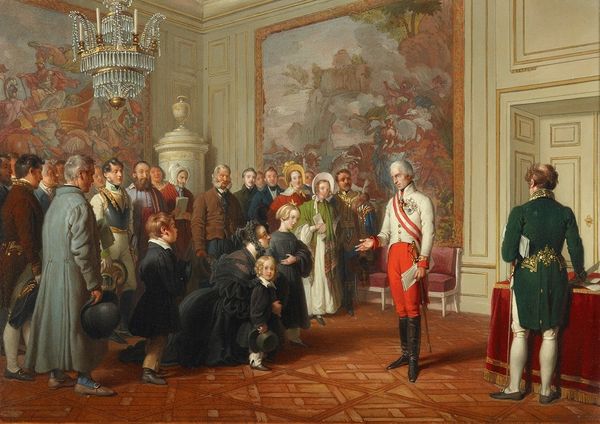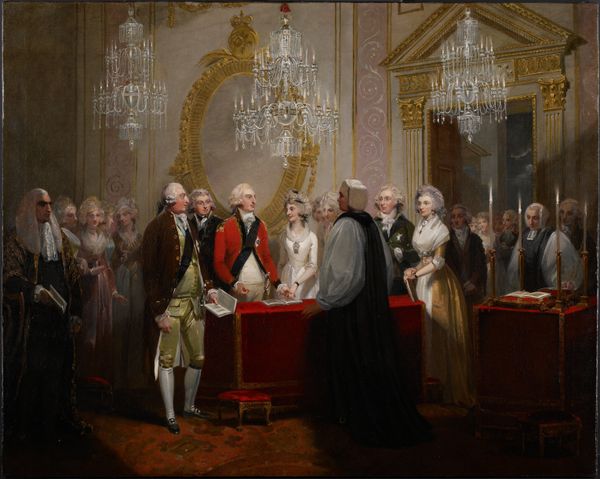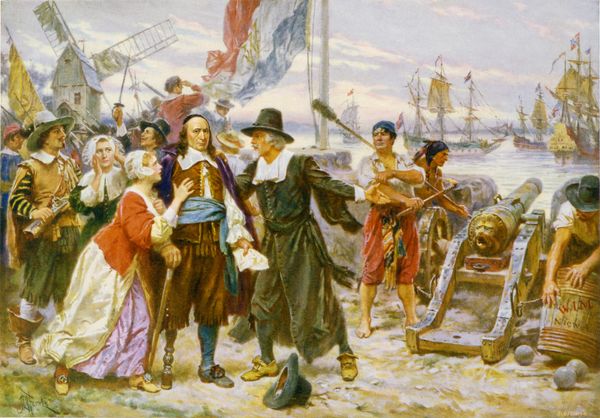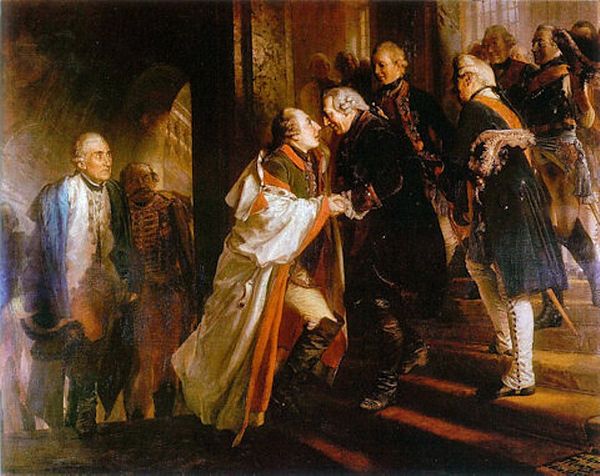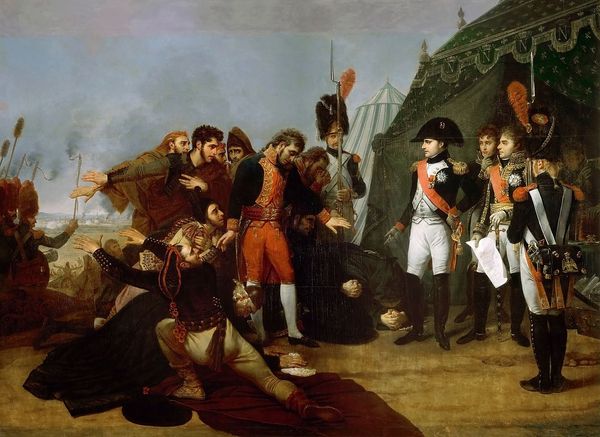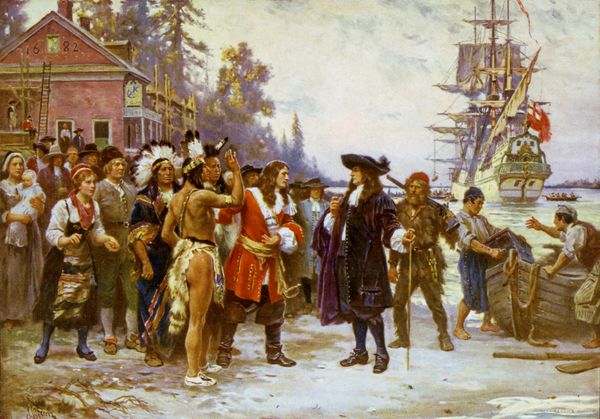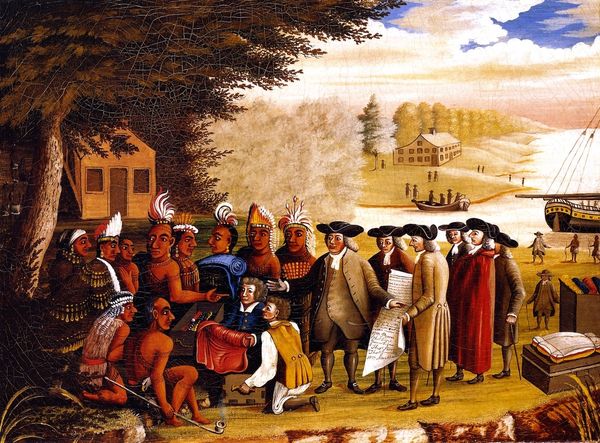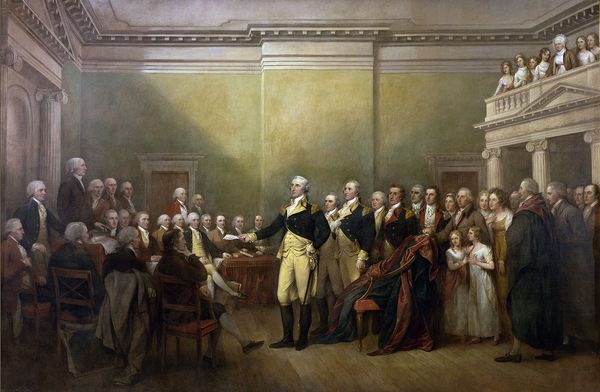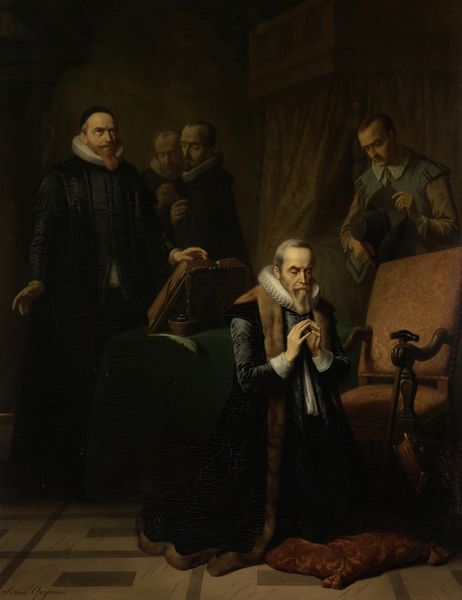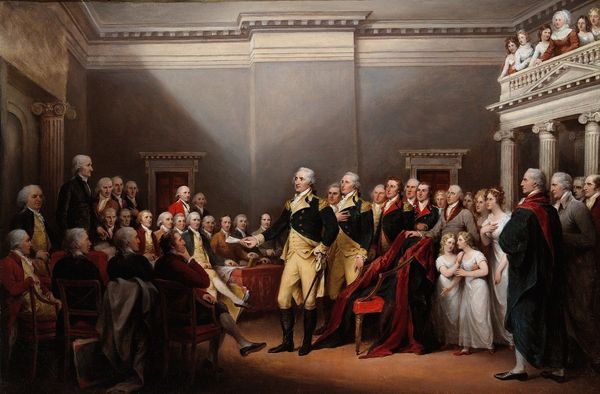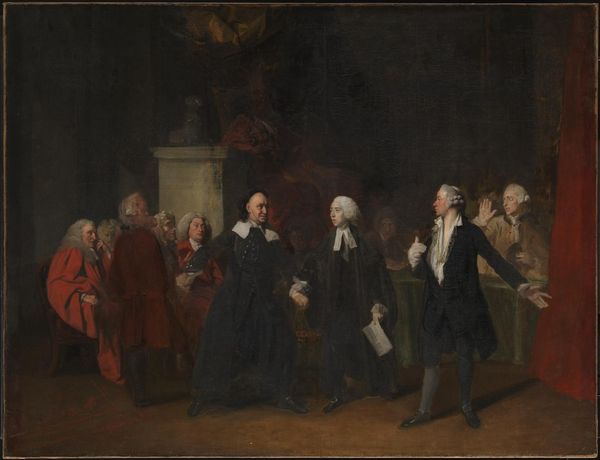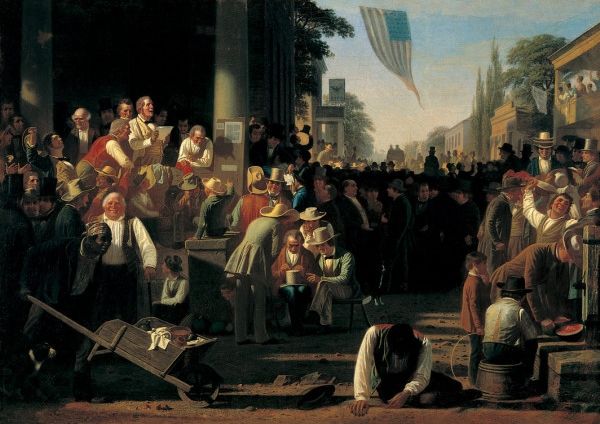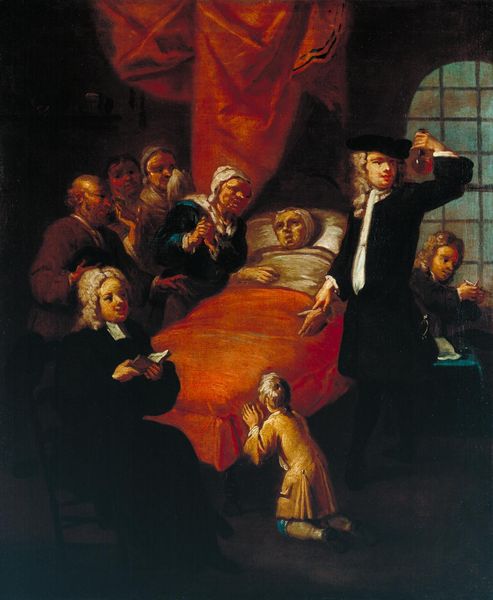
oil-paint
#
gouache
#
narrative-art
#
oil-paint
#
oil painting
#
romanticism
#
history-painting
#
academic-art
Copyright: Public domain
Editor: This is "Davel Executed" by Charles Gleyre, painted around 1850 using oil paint. There's a somber mood, the muted colors amplify a feeling of dread. I am drawn to the defiant figure in the center. How do you interpret this work, especially considering the time it was created? Curator: The painting is undeniably Romantic in style, but let's dig deeper. This is not just historical painting; it's a very deliberate commentary. Davel's execution references a historical event charged with social and political tensions. Consider the 1850s: Europe was rife with revolutionary fervor. Doesn’t Davel’s raised hand, even in his final moments, appear as a gesture of defiance against established power? Editor: I see what you mean! His defiance makes him appear revolutionary! But do we know how Gleyre personally felt about Davel? Curator: Exactly! That is the crux of understanding Gleyre's political alignment and potential critiques against the suppression of dissent. We need to explore Gleyre’s own social circles and writings from that period. We should question whether Davel represents an idealized image of resistance or a cautionary tale of the price one pays for challenging authority. Notice, for instance, how the faces in the crowd are indistinct, almost ghost-like, and consider what that might signify. Editor: The crowd definitely blends into the background, almost like they are accessories and not characters. Thinking about this in the context of revolutionary times makes it seem as though Gleyre could have made this artwork as social commentary about powerful authority in general, which is a timeless, unfortunately relevant issue! I've definitely gained a richer appreciation for this piece by viewing it from an activist's perspective! Curator: And that's the point: by intertwining art history and social discourse, we find renewed significance, recognizing that art can become a powerful tool for social change.
Comments
No comments
Be the first to comment and join the conversation on the ultimate creative platform.
